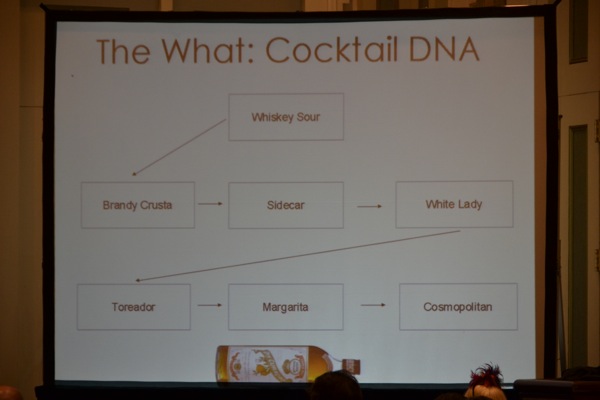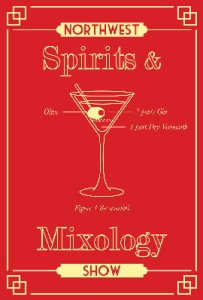Tales of the Cocktail: Modifiers: Eternal Life for Cocktails
July 25, 2013 by Mr. Boozenik
Filed under Spirits Events
Part trading quips and part lecture, Philip Duff, Erik Lorincz, Alexandre Gabriel, Joaquin Simo, and David Wondrich put on a very enjoyable and informative talk about the role modifiers have played in creating generations of cocktails, with each new generation a variation of some original being “twisted” into new favorites. As Wonderich began, “This all started with improvisation. How to make a cocktail a bit more flavorful, and bit more unique.” Since then we’ve changed and re-changed recipes, twisting or changing one modifier or another, until new cocktails have been born.
Hiding
According to David Wondrich, the first modifiers used in Europe were anise in the south of Europe, juniper in the center/north of Europe, and caraway in Scandinavia and were all to cover up shitty distillation. Remember that older distilling was crude, and much of what was produced was dangerous, so covering it with palatable flavors helped sell it.
While the ingredients in earlier modifiers were of less perishable nature, over time, modifiers from new and potentially more perishable sources became accessible. “New modifiers got added as they became easier to obtain. Logistics were paramount. You could not harvest, and juice and distill in the same day in the middle of a rain forest in Napoleonic days.” So now, instead of just nuts and dried berries, we have citrus, and ginger and other flavors available.
Sweetening
Another modifier to cover up the taste of the spirits “way back when” was often sugar, as in an Old Fashioned cocktail. But Alexandre suggested we should talk, possibly at length, about sugars, with an “s”, because there are so many sugars with different profiles. Also, classic techniques such as toasting sugar, or aging syrup, can bring out other flavors in the sugars. He suggested talking with a pastry chef to understand all of the differences.
Sugars are introduced into cocktails not only via granules, or simple syrup, but in the form of liqueurs, and those can vary wildly with sweetness. Pierre Ferrand Dry Curacao has only 185 g/liter of sugar. Others can be up around 500g/liter. And that does not just give different sweetness, but also great differences in mouth feel. Joachim added “It’s like finishing a pan sauce with butter. For drinks sugar is butter is fat.”
Evolution
New flavors, whether citrus, or spices or whatnot, came to popularity, partly because of exposure of some population to some new flavor from elsewhere. For example, after every world war there’s been an economic boom, and new tastes brought back from the other countries. As a result, the biggest single area for Benedictine is in the north of England, because of where the 16th Fusiliers, from the north of England, were stationed in World War II. Likewise, tastes for exotic fruits and spices which turned into the Tiki craze came to the U.S. along with the GIs returning from the War in the Pacific.
And each of these has given us something new to add to our repertoire. Whether sweet or sour or bitter or umami or some mix of them all, like most citrus, we now have more ingredients with more potential depth that we can add to a cocktail than maybe we could have 20 or 50 years ago. And that has given opportunity for cocktails to evolve over time. For instance, per one of the presentation slides, by generational changes, either to the modifiers or the base spirt, the Margarita is a great-great-great grandchild of the whiskey sour. While I find some of the middle steps of that pedigree a bit dubious, that the whiskey sour inspired, directly or not, the sidecar, and that the sidecar, again directly or not, inspired the margarita, should not come as a great surprise.
Looking Back
So, “What do modifiers do? They change aroma, taste, lowering alcohol percentage, and changing color. Color matters. It can make or break a cocktail to be grey or blue. Is Jacob Briars in here?” [Audience Laughter] And it is true. The change from a clear triple sec to an amber curaçao can not only change taste, but texture, color, and overall impression, and make or break a cocktail surviving the test of time.
Philip reminded “The old cocktails we love and want to make as they were, because they’re from the magical country of ‘The Past’, but this is a new phenomenon. It’s not like Jerry Thomas was looking back and saying ‘I want to recreate a classic something from the 1500s’. But now we have a desire for history and authenticity.” And, one would think, also a desire for evolution.








